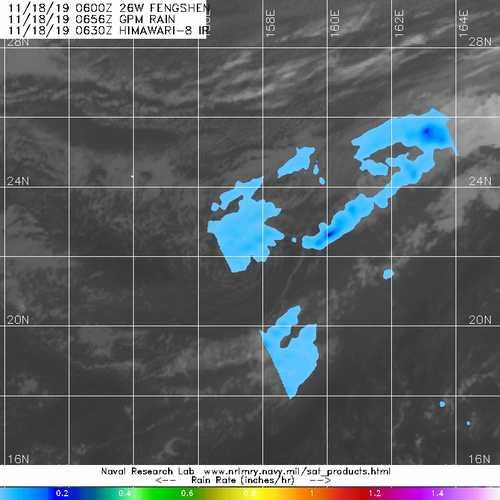
Credit: Credit: NASA/JAXA/NRL
A NASA analysis of rainfall rates shows that the once mighty Fengshen is now a depression devoid of heavy rainfall.
On Nov. 17 at 1 p.m. EST (1800 UTC), the Joint Typhoon Warning Center noted that Tropical Depression Fengshen was located near 24.8 degrees north latitude and 157.9 east longitude, approximately 585 nautical miles northwest of Wake Island, and had tracked southeastward. Maximum sustained surface winds were estimated at 30 knots (34.5 mph/55.5 kph) and weakening.
NASA has the unique capability of peering under the clouds in storms and measuring the rate in which rain is falling. Global Precipitation Measurement mission or GPM core passed over Fengshen from its orbit in space and measured rainfall rates throughout the storm on Nov. 18 at 1:56 a.m. EST (0656 UTC). GPM found a few areas of light rain (blue) falling at a rate of 0.4 inches (10 mm) per hour remained in the weakening system.
Fengshen is expected to become a remnant low pressure system later on Nov. 18.
Typhoons and hurricanes are the most powerful weather event on Earth. NASA’s expertise in space and scientific exploration contributes to essential services provided to the American people by other federal agencies, such as hurricane weather forecasting.
###
Both the Japan Aerospace Exploration Agency, JAXA and NASA manage GPM.
Rob Gutro
NASA’s Goddard Space Flight Center, Greenbelt, Md.
Media Contact
Rob Gutro
[email protected]
Original Source
https:/




